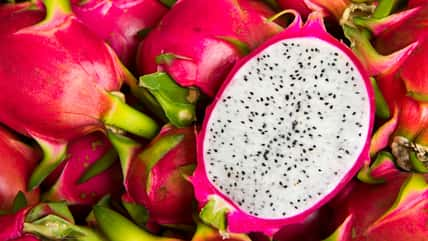A Woman Buried 2,200 Years Ago With Her Teeth Painted Red Was Found In China

An archaeological discovery in the Turpan Basin of northwest China has revealed the 2,200-year-old burial of a woman with teeth painted in a toxic red substance called cinnabar. This practice has not been documented in history before, making the discovery the only one of its kind.
Cinnabar is a bright red mineral made of mercury and sulfur. It has been used since the 9th millennium B.C. in art, writing, body painting, and religious ceremonies, but this is the first time it has been found on human teeth.
“This is the first and only known case of cinnabar being used to stain teeth in antiquity and throughout the world,” said Qian Wang, the senior author of the study and a professor of biomedical sciences at the Texas A&M University College of Dentistry.
The find was made while archaeologists were excavating the Shengjindian cemetery in Turpan City, located in the Xinjiang region of northwestern China. The cemetery lies along a key region of the Silk Road, where excavations have been ongoing since 2007.
The site dates back to 2,200 to 2,050 years ago, when the Silk Road was active with the trade of precious goods, such as cinnabar.
The archaeologists concluded that the individuals buried in the cemetery were Gushi people, who followed the Subeixi culture.
The Subeixi culture was a horse-riding pastoralist culture in which women used saddles to ride horses. It thrived in the Turpan Basin almost 3,000 years ago.
The woman was found buried alongside three other individuals in a tomb dating back between 202 B.C.E. and 8 C.E. during the Han Dynasty.
She was estimated to have died between the ages of 20 and 25. According to experts, she may have been central to shamanic practices that demonstrated the beliefs of her time.

Sign up for Chip Chick’s newsletter and get stories like this delivered to your inbox.
Researchers scraped off a sample of the pigment from her teeth and analyzed it with three different spectroscopy methods. The results showed that the pigment was cinnabar, which had been mixed with an animal protein.
“Given the importance of this discovery and the potentially high social status of this young woman, we have named her the ‘Red Princess of the Silk Road,’ directly referencing the famous Maya tomb of the so-called Red Queen of Palenque, Mexico,” noted the researchers.
The Xinjiang region is not a source of cinnabar, but it was mined and traded along the Silk Road. China and Europe were the two major cinnabar-producing areas along the route.
So, the cinnabar from the Turpan cemetery could’ve come from Europe, West Asia, or other parts of China.
It is unclear why the woman’s teeth were painted red. One theory suggests that she may have been a shaman or a religious figure of high status, as cinnabar was associated with spiritual beliefs in the region.
It is possible that she had facial paintings or tattoos, a specific hairstyle, and costumes to go with her red teeth.
The study was published in the journal Archaeological and Anthropological Sciences.
More About:News





